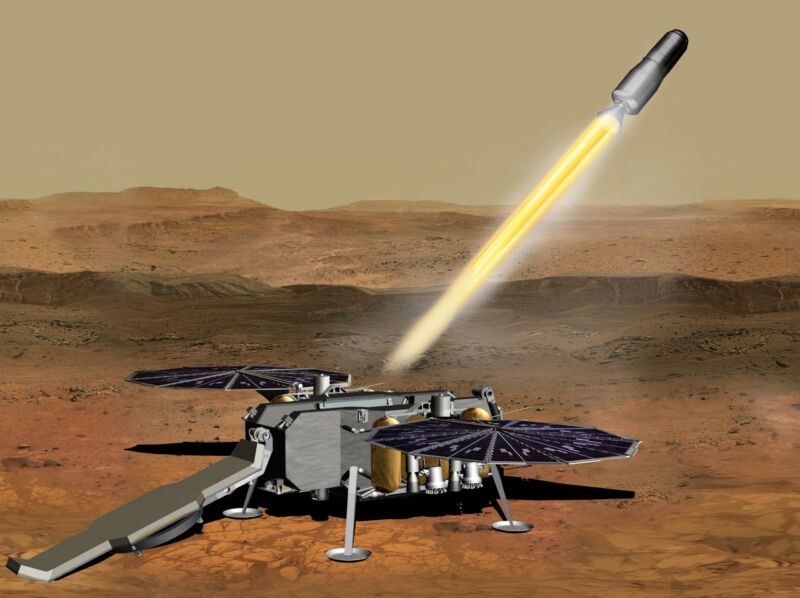The president proposes, Congress disposes —
“The goal is 2024, but I think we have to be brutally realistic.”
Eric Berger
–

Enlarge / NASA’s proposed Mars Sample Return mission received funding in the budget request to support a 2026 launch.
NASA
As part of the federal budget rollout on Friday, NASA released details of the funding it hopes to receive from Congress in fiscal year 2022.
The president’s budget request seeks $24.8 billion for the coming fiscal year, a nearly 7 percent increase over the $23.3 billion in funding NASA received for the current fiscal year, which ends on September 30. Congress will ultimately decide funding levels, of course, but this budget request is indicative of White House priorities.
The Biden Administration has placed a strong emphasis on science during its first four months, and that focus is reflected in this budget request. The White House is seeking $7.9 billion for NASA’s science programs, including Earth science and missions to explore the Moon and other planets. This represents a nearly 9 percent increase over last year’s budget for science programs, with Earth science and planetary science receiving the most significant increases.
“It’s the largest budget request for NASA science ever,” said NASA Administrator Bill Nelson in a call with reporters on Friday afternoon. “The Biden administration is proving that science is back. This will help NASA address the climate crisis and advance robotic missions to pave the way for humans to explore the Moon and Mars.”
The funds would provide for the development of “four core strategic missions for launch in this decade” to create an Earth System Observatory to monitor the effects of climate change and better understand our planet. With an allocation of $653 million in the budget request, NASA would also remain on track to launch a Mars Sample Return mission to the red planet in 2026 to bring rocks back to Earth for study.
Lunar lander
The White House has also requested $1.195 billion for the development of a Human Landing System as part of the Artemis Program to return astronauts to the Moon by 2024. Nelson said this level of funding would be enough to support a demonstration mission—using SpaceX’s Starship vehicle—as early as 2024. The funding would also allow NASA to begin to implement a competition for future lunar landing contracts that might be won by a Blue Origin-led team or Dynetics.
“It has been, in no uncertain terms, expressed to me by both the members of the House and the Senate that they want a competition for the remaining lander contracts that will occur over the course of the decade following the first demonstration flight,” Nelson said.
NASA has said it supports more robust competition, but to enable this idea for the complex lunar lander program, the agency needs more funding. That battle is currently being waged in the Senate with an amendment to the Endless Frontier Act. The bill would authorize an additional $10 billion over the next four years to ensure that a second lander is developed in parallel with SpaceX’s Starship vehicle. However, this amendment has been criticized by some senators, including Bernie Sanders and Ron Paul, because the likely beneficiary is Blue Origin and its owner, Amazon founder Jeff Bezos.
Nelson also acknowledged that while NASA is still pressing toward a 2024 human landing date on the Moon, the agency faces difficult technical headwinds in addition to financing concerns.
“Space is hard,” he said. “As you know, as you see the development of various space systems in the past, there have been delays. When you go further and further away from the Earth with new technologies, we have seen, historically, delays. The goal is 2024, but I think we have to be brutally realistic, and that history would tell us that there could be delays to that schedule.”

